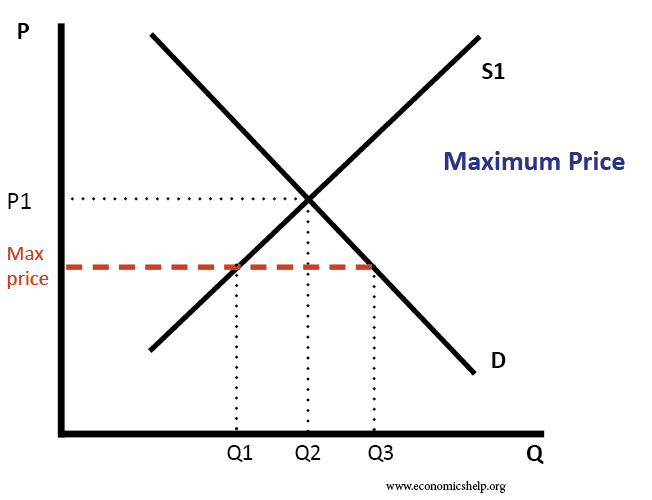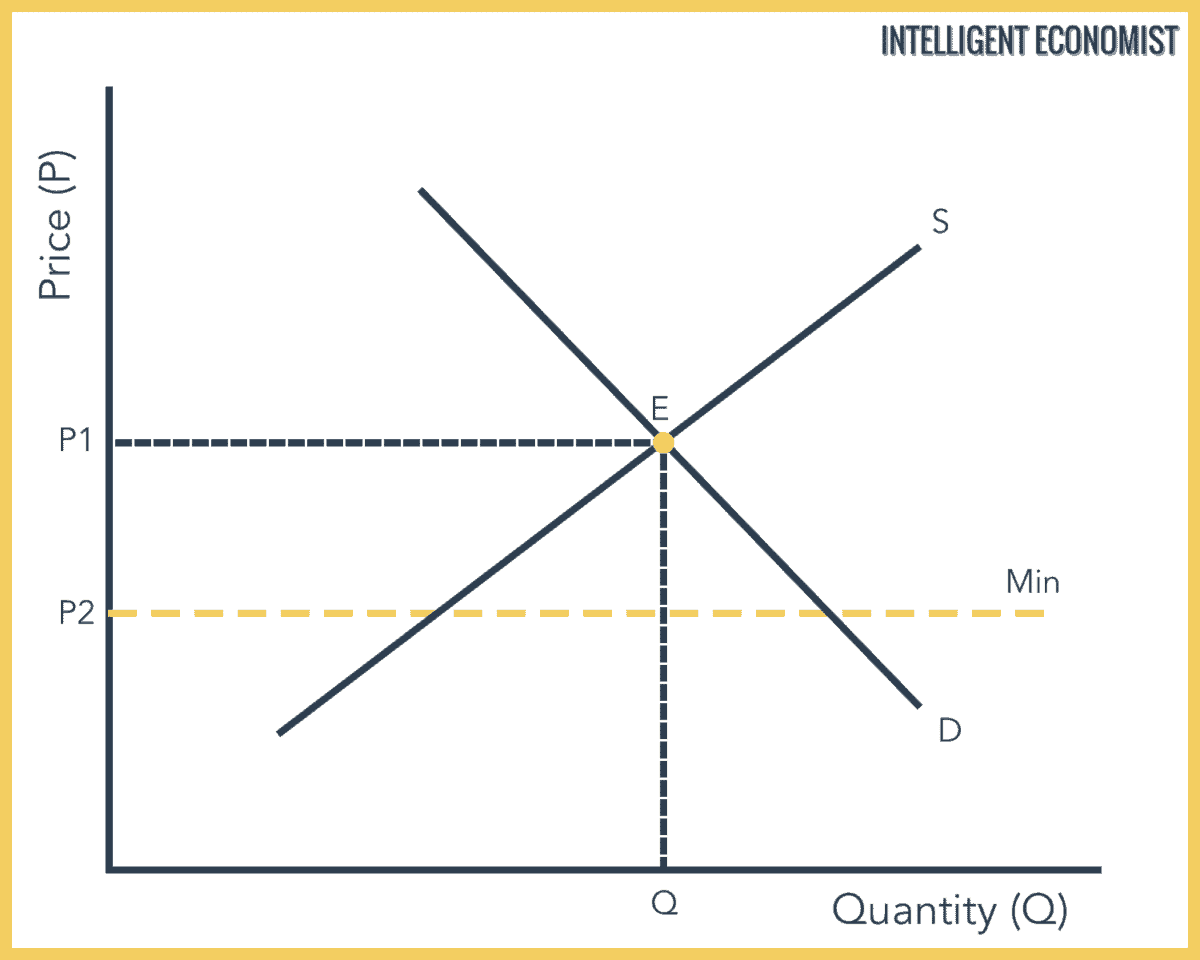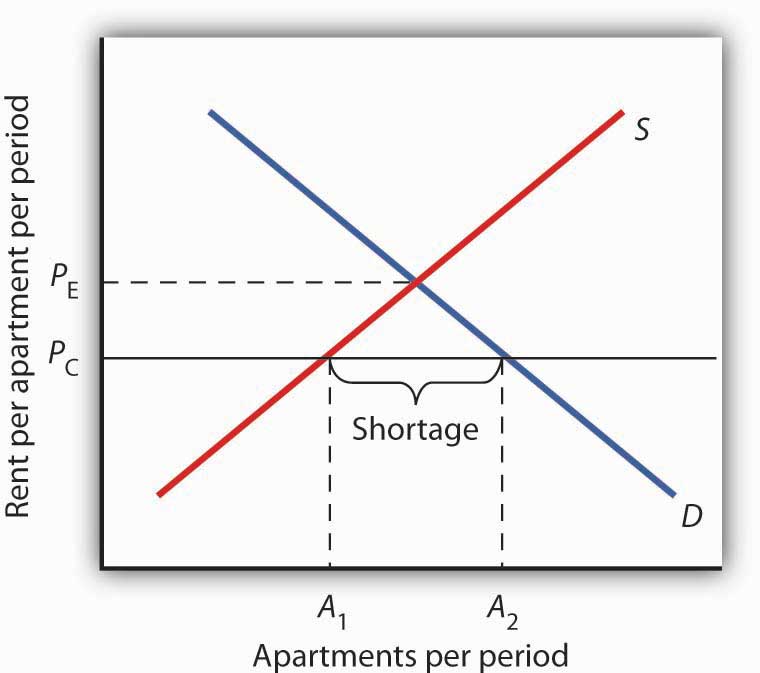Price floor is a situation when the price charged is more than or less than the equilibrium price determined by market forces of demand and supply.
Define price floor in economic terms.
This lesson will discuss the economic concept of the price floor and its place in current economic decisions.
This term to describe an economic deficiency.
Price ceiling is a situation when the price charged is more than or less than the equilibrium price determined by market forces of demand and supply.
The opposite of a price ceiling is a price floor which sets a minimum price at which a product or service can be sold.
This control may be higher or lower than the equilibrium price that the market determines for demand and supply.
Price floor has been found to be of great importance in the labour wage market.
By observation it has been found that lower price floors are ineffective.
A price floor is a government or group imposed price control or limit on how low a price can be charged for a product good commodity or service.
A price floor must be higher than the equilibrium price in order to be effective.
The equilibrium price commonly called the market price is the price where economic forces such as supply and demand are balanced and in the absence of external.
It has been found that higher price ceilings are ineffective.










/QuantitySupplied2-98c4fd9fe04e4ec78318d9dd87f2c93e.png)